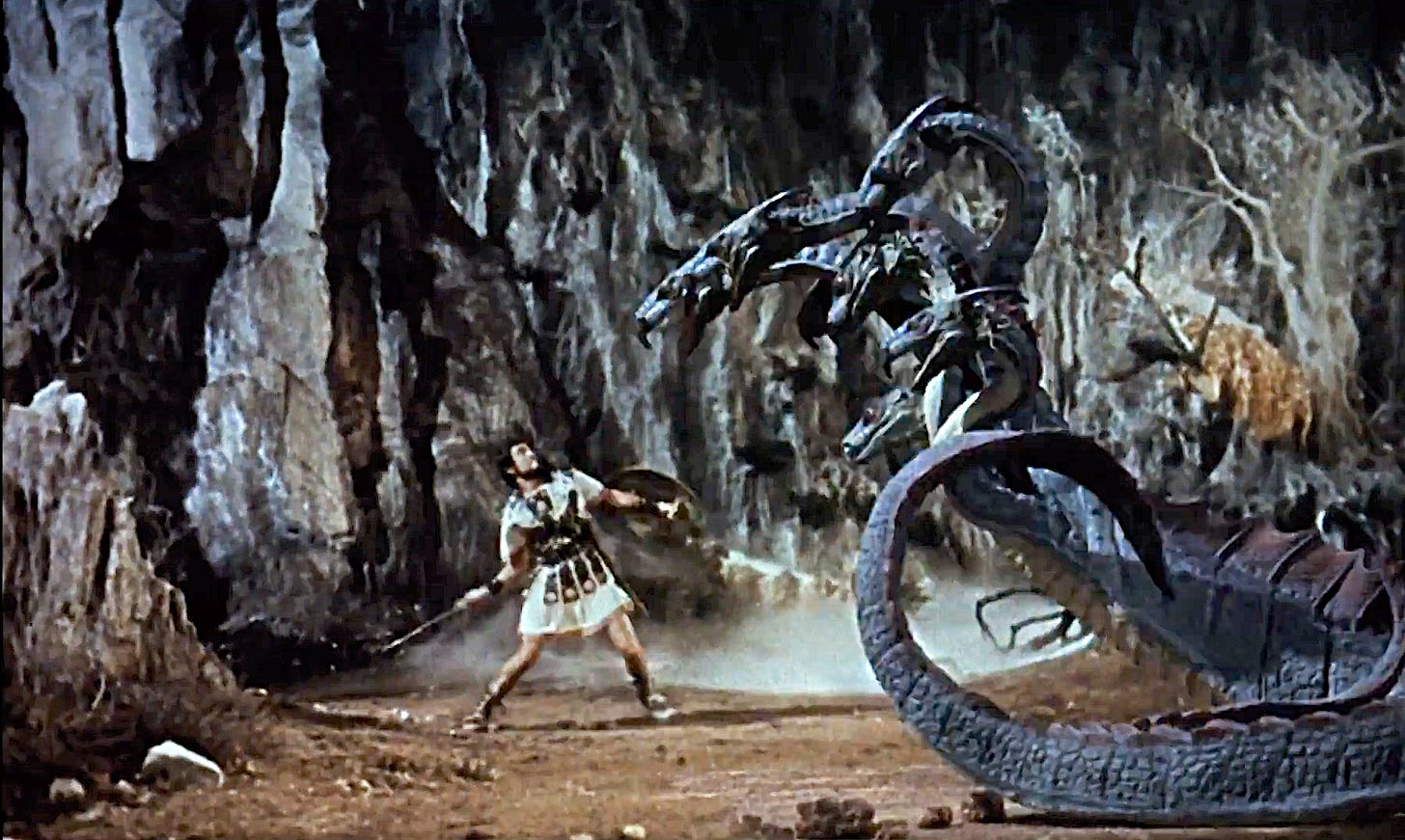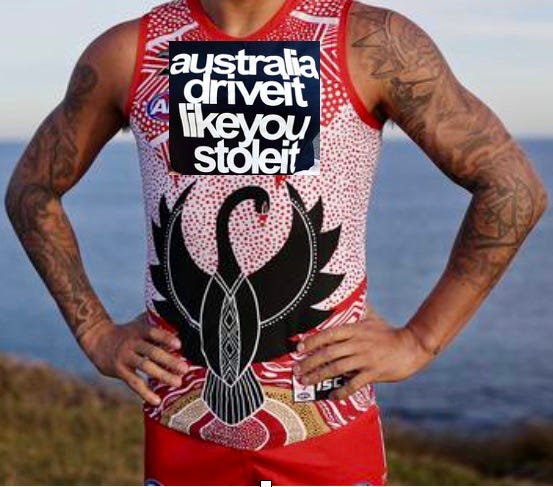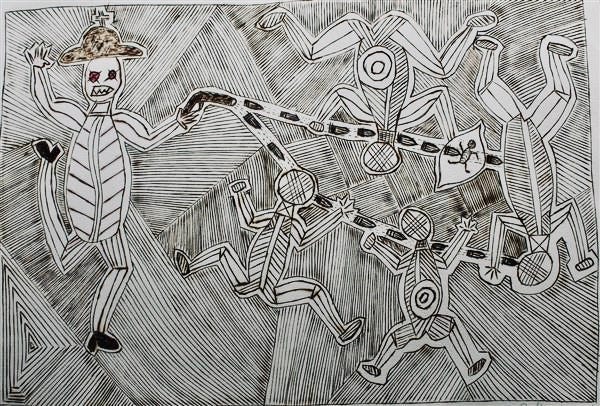TIME FOR TRUTH PART 2: DRIVEITLIKEYOUSTOLEIT
A referendum to enshrine an Indigenous Voice to Parliament in the constitution is almost upon us. Treaty and Truth might follow. Is Aboriginal and Torres Strait Islander art part of the conversation?
Imagine we’re in a metaphorical green field, where the rise of Australian Aboriginal desert art, from ethnographic sidebar to art-world mainstream, didn’t happen. Aboriginal art’s big bang at Papunya in 1971 spluttered and died, and Clifford Possum and Emily Kame Kngwarreye weren’t subsumed into that gilded shopfront with a bookie’s den out the back, the million-dollar art club. No gold-rush into the opportunities and - eventually - the obligations, that Aboriginal art presents us with.
Like Poseidon shares or a hot tip for the Melbourne Cup from a stranger on Town Hall Station, the rise of Aboriginal art could easily have been just another episode in Australia’s endless psychodrama of boom and bust. More of that carefree 1970s big dick hubris: getting pissed in full January sun cheering Lillee and Thommo, but for the arty crowd this time.
It’s not impossible to believe: Aboriginal art didn’t even get its own department at a nascent National Gallery of Australia until 1984.
So imagine for a minute that the big stockpile of unsold, unloved and unwanted canvases stashed in a storeroom at Papunya by the early 1980s (true story) was thrown out, buried in a garbage pit along with the settlement’s rubbish. Where would that leave us today?
Undoubtedly poorer culturally and spiritually and morally. No question.
At a crunch-point for black-white relations as we head towards a referendum on the Voice, and then - deep breath - perhaps a Treaty and a Truth-telling, does Aboriginal art today hold a mirror to our national soul: is it enough to lead us to a cultural self-reckoning, a national ‘moment’ of the same strength and generosity as that delivered by the first great Aboriginal art movement, the one that helped power the delivery of self-determination and land rights, and enlarged settler Australia’s vision of itself?
Simply put, are today’s art-makers up to the challenge of winning over a public confused by politicking, distracted by multiple pressing issues like cost of living and ecological collapse?
(Naturally one could ask the same question of non-Indigenous Australian art, and I suspect the answer would be very depressing. But that’s a story for another day.)
Gone is the generation of Papunya’s first wave of artists, along with most senior artists who took up painting in their wake, bar a handful of remarkably resilient and still-powerful artists like Nyunyarangu Simon Hogan and Mirrinya Lawrence Pennington, nonagenarian Pitjantjatjara-speaking Spinifex men who paint their cultural truths at Spinifex Arts Project in the Great Victoria Desert. Or Pitjantjatjara women Iluwanti Ken, at Tjala Arts in Amata in the APY Lands, and Rene Kulitja, leader of the small group of senior women artists in Mutitjulu Community who painted the designs surrounding the Uluru Statement from the Heart.
Iluwanti Ken, Walawulu ngunytju kukaku ananyi (Mother eagles going hunting) 2020, pigment ink on paper, 152 x 200 cm. “I paint the stories of my father’s country – Walawuru Tjukurpa – the story of the eagles. This is my tjukurpa and all of my children’s tjukurpa too”. Courtesy the artist and Tjala Arts.
In place of the trail blazers are often close descendants, as even a cursory glance at their too-familiar canvases will tell you. Perhaps they’ll mature into more individual spirits, but most of these younger artists lack the stylistic boldness of their forebears, who were true innovators.
As for the shadow-industry of carpetbaggers, the so-called private studios, desert hydra that will not die: have a look at eBay, and weep.
But some artists (racehorses not donkeys, as a well-known dealer once put it to me) are the exception that prove the rule. Plucked from their crowded cohort they now appear not in the dwindling number of galleries of specialist dealers in Aboriginal art, but in metropolitan galleries better known for selling expensive white art. Vincent Namatjira and Kaylene Whiskey being prime examples. Both live and work in the same home community of Indulkana, in the Anangu Pitjantjatjara Yankunytjatjara (APY) Lands of South Australia’s far north, where they paint at Iwantja Arts art centre, alongside senior painter Alec Baker - one of the last of the APY’s stockmen-turned-artists who never left their Country and won their land rights fight in the 1980s.
Namatjira (great-grandson of the legendary Albert) has pointedly declared a decolonising agenda by inserting himself into portraits of the royal family and other authority figures, and Whiskey unequivocally celebrates her Anangu culture as a kungka kunpu, a strong young Anangu woman, alongside superheroes and pop idols.
Vincent Namatjira, The Royal Tour (Vincent and Elizabeth), 2020, acrylic on linen, size 67 x 91 cm. Image courtesy Iwantja Arts.
Kaylene Whiskey at Indulkana with her diptych Strong Kungka 1 and Strong Kungka 2, acrylic on linen, each 122 x 167 cm. Image courtesy Iwantja Arts.
Both artists incorporate appealing cross-cultural references and have been feted by prominent dealers and public institutions - a pipeline to art-world fame and fortune. But the fact is, for all their deserved popularity among collectors and curators, and the undeniably original nature of their work, in my view even these two brilliantly engaging artists have not cracked the mask, set a match to the bonfire of racist bullshit on which modern Australia is built, have not brought on an existential crisis of moral self-reflection.
That’s a huge ask, I admit.
And why should First Nations artists carry the weight of it anyway? Fair question. But if you’re looking for anything more than lip service from the same Australia that celebrates Australia Day on the anniversary of white invasion; hounded champion AFL player Adam Goodes out of the game; and incarcerates young First Nations people at 27 times the rate of non-Indigenous youth, good luck with that one.
Don’t get me wrong, Vincent Namatjira and Kaylene Whiskey are great artists and I love and admire their respective singular visions of what it means to be Aboriginal within communities national and local (indeed, have bought and lent their works for exhibition around Australia). But will it change a damn thing however many more art prizes they win, and however many of their paintings are acquired by state and national art museums?
Maybe. Or maybe not. Artists’ reputations among curators and collectors mean jack shit to most Australians. Even less than the art-free clichés that decorate Naidoc week posters, Indigenous Round footy shirts, Welcomes to Country and thousands of public art murals.
I get that those posters, shirts and murals are designed by First Nations people, for First Nations people. They are the stuff of a thousand Reconciliation Action Plans. But where I’m standing, in regional Australia, they land with a faint, distant thud, if at all, on the consciousness of an ignorant and distracted non-Indigenous public.
Imagine instead the impact if footy players wore the tee-shirt design by dissenter Vernon Ah Kee, the radical Kuku Yalandji, Waanji, Yidinji and Gugu Yimithirr artist: “Australia: drive it like you stole it”. Lob that into the mix, and stand back.
That's unlikely to happen, dream though we might. But if someone is going to blow up the myth of what Wiradjuri thinker Stan Grant calls “fantasy Australia”, perhaps it’s time for truth, at last, straightforward and unadorned, hard listening though it may be.
It’s not rocket science. “The reconciliation process has stalled because it failed to do what reconciliation should do: talk about the truth”, (Professor Megan Davis, co-presenter of the Uluru Statement from the Heart, in The Monthly, March 2017).
Wathaurong artist Dan Kelly’s Genocide 2014, pyrography on paper, 38 x 54 cm. Image courtesy Baluk Arts, Mornington, Victoria. Sims Dickson Collection and Archive.
So where to now?
Exciting and appealing as Vincent Namatjira and Kaylene Whiskey are, and however mytho-poetically charged the work of Hogan, Pennington, Ken and Kulitja is (and god knows it most certainly is that, in excelsis - they make Fred Williams’s cautious landscapes look like watery ejaculate from a half-boner), sadly it seems the zeitgeist is just not with them.
Not their fault, obviously. I’ve seen how gloriously transcendent great Australian Indigenous art can be, as many others have, and for that mind-expanding and life-changing experience I’ll be forever grateful. But it saddens me that the public sphere now is filled with mere approximations, a mishmash of tropes deployed for decorative effect, with all the appeal, and perhaps even intent, of a corporate logo. I miss in all this convention and mediocrity what Yolngu people of North East Arnhem Land call bir’yun: the brilliance or shimmer of a living, creative life-force: an elemental power to spit lightning up to the heavens, to lift mountains, to light an underworld below us with its own sun, to shapeshift, to fly through the night sky to cure the sick, and to endlessly regenerate itself. I fear we have instead been delivered something so banal - so weak - that it cannot possibly carry the weight of Aboriginal and Torres Strait Islander cultural richness - so generously offered - that could, given the opportunity, convince Australians to finally, 250 years on, embrace the difference, strength and generosity that would allow this nation to heal.
At the end of the day it doesn’t matter what I think, but it does matter that Australia heals. Surely Kaurna elder Aunty Josie Agius said it best, at the 2014 Adelaide Biennial of Australian Art: “Brothers and sisters, let us go forward, side by side, in peace and harmony”. Acknowledging and celebrating great Aboriginal art that’s truthful, bold and fearless is a step on that road.
Stan Grant quote from ABC TV broadcast, 6 May 2023, the coronation of King Charles III.
Tee-shirt design by Vernon Ah Kee.
Composite image of Sydney Swans footy shirt and tee-shirt by Matt Dickson.
Looking for Part 1 of Time for Truth? Find it here:
TIME FOR TRUTH: SALLY MULDA, TRUTH TELLER
Sally M Nangala Mulda, six Town Camp scenes, 2017. EXTRAORDINARY IN THE ORDINARY Arrernte-Luritja woman Sally Mulda, pre-eminent among the elderly women artists of the art centre called Tangentyere Artists, is one of an unassuming but powerfully resonant posse of storytellers now living in Alice Springs (Mparntwe) in Town Camps and in aged care. Her no-fr…












